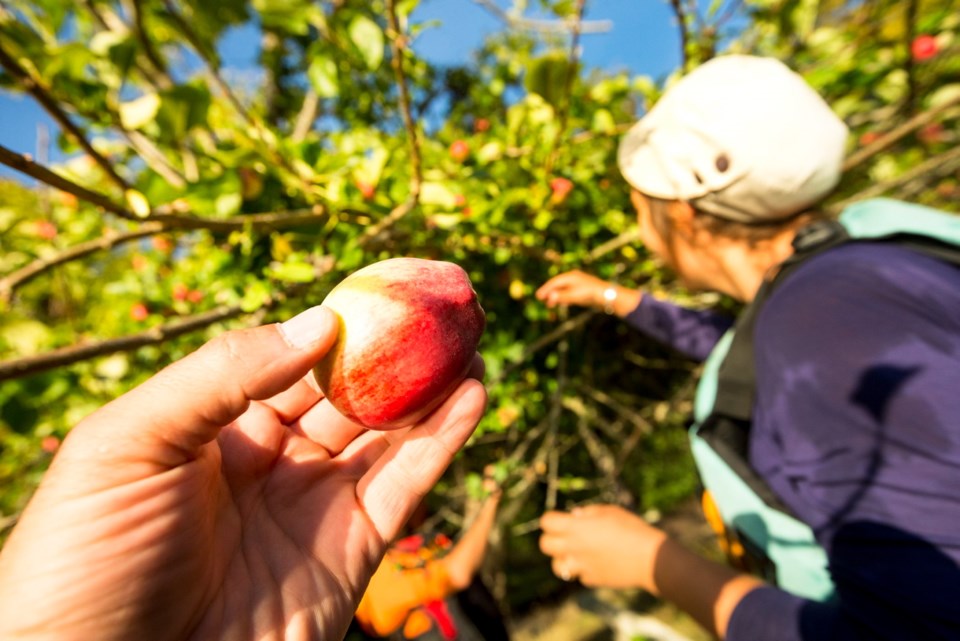Archeologists and cultural workers at Parks Canada are mapping the European settlement of the Gulf Islands with the help of apple trees still found in former orchards.
Apple trees growing and bearing fruit in now-abandoned orchards can provide clues to the backgrounds and tastes of the people who settled in and around the Salish Sea.
David Dick, program assistant with the federal Gulf Islands National Park Reserve, said one abandoned orchard on Prevost Island was once tended by a Russian by the name of Ivan Michurin, and he is believed to have planted a Russian variety called Antonovka.
“Otherwise, how that particular apple came there is kind of unknown,” Dick said.
The Okanagan is generally regarded as the centre of British Columbia’s fruit-growing industry. But the climate of southwest coastal B.C. is also good for growing fruit because it’s reasonably certain the young trees will be free from damaging cold temperatures.
Parks Canada says the Gulf Islands were once the largest apple-producing area in the province. Their farms and orchards were also a major source of produce grown for personal survival and for sale to passing ships or for shipment out.
Now, the Gulf Islands National Park Reserve covers about 36 square kilometres of bays, beaches and land spread over islands dotted around the Salish Sea.
Dick said in that park area lie the remnants of at least 16 orchards, many of which still contain fruit-bearing trees, whose special varieties can give clues to how early European setters lived and ate.
Another example is an old orchard on Mayne Island where trees bearing Baldwin and Golden Grimes can be found.
Those apples can be stored for a long time. They are also firm and could have withstood the jostling during shipment from the island’s Miners Bay to provision miners on their way to the Cariboo Mountains and Interior mining centres such as Barkerville during the gold rush in the second half of the 1800s.
On Russell Island, trees bearing King of Tompkin County apples were discovered. That apple originated in the U.S. and is believed to have been transported and planted here by Hawaiian settler William Haumea.
Dick, whose background is in archeology, said the apples are a bit of a leap for him. Normally, he would be concerned with items such as petroglyphs or land features such as ancient middens created by the First Nations peoples.
But historical evidence yielded by the abandoned orchards is just as valid as that from First Nations sites, although much more recent.
“We are trying to understand the history of a significant aspect of the cultural landscape within the park,” Dick said. “Each culture that came brought its own unique traditions.”
Harry Burton, owner of Apple Luscious Organic Orchard on Salt Spring Island and founder of the Salt Spring Island Apple Fest that concluded on Sunday, said seeking historical clues in the varieties of apple and other fruit trees is not new.
He has spoken with a parks official from California who is doing it in parks there.
But he said identifying a particular variety of apple can be difficult. To give an idea, the recent Apple Fest featured 430 varieties, and Burton said he has found some trees bearing fruit he still can’t identify.
He has also found apple varieties on Salt Spring that he has traced back to Ireland; they were brought by a settler who brought seeds and cuttings to the island.
“Everybody that came here planted an orchard,” Burton said. “That was one of the first things they did.”
To learn more about the historical orchards in the Gulf Island National Park Reserve, go online to pc.gc.ca/gulfislands.



